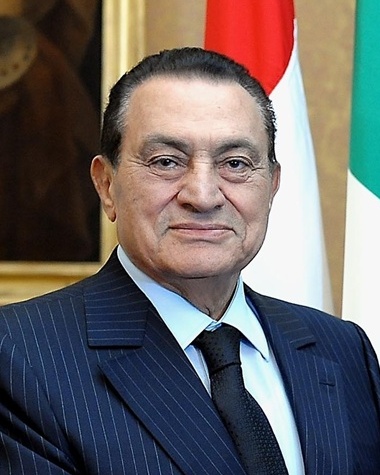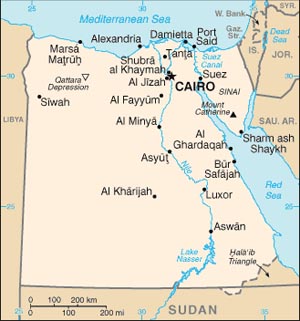02.12.2011 original publish date
10.24.2012 Link update/ advisement re: US Aid
08.14.2013 replaced available broken link

Financing Foreign Policy – Hosni Mubarak
original article written by Net Advisor™
After some 30 years controlling the government of Egypt, it took about 18 days to remove its leader, President Hosni Mubarak from power (Source: U.S. News).
According to published reports, Hosni Mubarak will leave office far wealthier than many had ever thought. In fact, Mubarak may just be one of the richest if not the richest persons in the world.
“While a fifth of Egyptians live on less than $2 a day, Mubarak is worth somewhere between $40 billion and $75 billion, CNN’s Tom Foreman estimates.”
— Source: The Atlantic Wire
Another report cited by The Guardian noted, “Middle Eastern sources placing the wealth of Mubarak and his family at somewhere between $40 billion and $70 billion” (Source: U.S. News).
[Note: The above U.S. News link was moved or deleted (copy of error here), however the article was republished by Malaysia Today one day after the original story and can be referenced here in PDF. Some of the U.S. Aid links have been moved or deleted. The U.S. Aid – Egypt website can be found here.]
The U.S. on the other-hand is currently and technically insolvent with some $14 Trillion+ in debt; yet is generous enough that each year we borrow hundreds of billions and some of that money goes to foreign aid. There is purpose to all this, and in this particular case, Egypt has been a generous beneficiary.
The United States has given, (not loaned) Egypt some $28.6 Billion in economic assistance since 1975.
— Source: U.S. AID. (Note: Since our report, U.S. Aid has moved or deleted the link to public disclosure) Secondary Source: CS Monitor).
According to U.S. AID, current uses of these funds are for, “economic growth; education; healthier, planned families; and democracy and governance.”
However total aid to Egypt seems to be a lot higher than that:
“…Egypt has pocketed $60 billion in economic and military assistance (from the USA) since its 1979 peace agreement with Israel.”
— AEI.org (12-01-2008)
Currently about 1 in 3 people are illiterate in Egypt and the average annual income is about $2,270 (Source: Guardian.UK). Currently the U.S. gives some $1.5 Billion annually to Egypt (Source: Forbes).
Money Well Spent?
The U.S. Air Force apparently spent some $111 Million to provide maintenance services for the former Egyptian President’s fleet of Gulfstream jets. So even though we might be providing jobs in the U.S., tax payer money was being spent to support one of the world’s wealthiest person’s fleet of A-Class jets.
Egypt supported the USA in 1990-1991 during Operation Desert Storm in Iraq. In exchange for Egypt’s moral support, the U.S. forgave some $20 Billion of debt they owed to the U.S. Treasury (Source: Guardian.UK).
Despite the billions the U.S. has provided, Egypt on its own generates some $500 Billion a year in economic activity (Source: CIA Fact Book).

EGYPT FACTS AT A GLANCE:
Total Population: 80.47 Million (2010 est.)
Population Below Poverty Line: 20% (about 16 Million people)
Labor Force: 26.1 Million (2010 est.)
Unemployment Rate: 9.7% (2010 est.) (about 2.53 Million people)
GDP (Growth Rate): 5.3% (2010 est.)
Inflation Rate: 12.8%
Land-Line Phones: 10.352 Million (2009)
Mobile (cell) Phones: 55.352 Million (2009)
Media: 100% government owned and controlled.
— Source: CIA Fact Book
With the county seemingly able to be self-sustainable, and growing nearly twice as fast as the USA, one might ask how did Hosni Mubarak amass some $40 to $75 Billion?
One report suggested, “Mubarak’s half-Welsh wife, Suzanne and their sons, Gamal and Alaa, were able to accumulate wealth through partnerships with foreign investors and companies, dating back to when he was in the army and in a position to benefit from corporate corruption.” At this point, one might beg the question: How much money has the U.S. sent to Egypt and really ended up in the pocket of this dictator and his family?
Both former President Bush and President Obama have argued that this part of the world (Africa in general) is in the strategic interest of the United States. The former and current U.S. Presidents are correct to argue such. President Bush’s long time push for democracy and associated billions in funding in aid and to Egypt’s military seemed to work to get the people in Egypt to overthrow their 30 year dictator (Source: Newsweek).
Jeffrey Azarva, Research Fellow at the American Enterprise Institute for Public Policy research called it back in 2008, when he said:
“…Egypt is entering a period of flux and a changing of the guard is bound to happen on Obama’s watch. Egypt’s octogenarian president, Husni Mubarak, whose reign has now spanned five U.S. presidencies, will soon depart the scene either of his own volition…”
—- Source: Jeffrey Azarva, AEI.org, 12-01-2008
So perhaps the U.S. got its monies worth, but it sure took a long time (30 years) to produce a result; and its leader walks away with billions of dollars?
Perhaps someone might want to start freezing some assets and determine what of his fortune was “legitimately” earned, and what came from any corrupt activities such as potentially diverted U.S. funds, and or any potentially embezzled funds to his personal secret Swiss or other bank accounts.
It looks as if at least the Swiss have taken the first step to freeze Mubarak’s known Swiss assets (Source: Sidney Morning Herald.AU). Congress should also examine the money the U.S. spends on foreign policy programs and seek to justify some of this lavish spending with a cost benefit analysis. It’s tough enough for the U.S to borrow money to finance its government activities, but when tax payer funds are lavishly spent on appeasing a dictator who we eventually want ousted, is there another way to finance this foreign policy?
__________________________________________________________________________
short link: https://www.netadvisor.org/?p=7696
Image – Hosni Mubarak © 2009 Presidenza della Repubblica
Image – Map of Egypt (2007) (World Fact Book, U.S. Dept. of State)
Original Content Copyright © 2011 Net Advisor™ All Rights Reserved.
Revised Copyright © 2013 NetAdvisor.org® All Rights Reserved.
NetAdvisor.org® is a non-profit organization providing public education and analysis primarily on the U.S. financial markets, personal finance and analysis with a transparent look into U.S. public policy. We also perform and report on financial investigations to help protect the public interest. Read More.
__________________________________________________________________________

